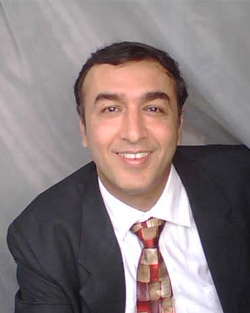
Somers: What do you think is essential for achieving and sustaining a successful business partnership with third party vendors?
Khera: Firstly you need to identify the right partner. It’s important the selection process results in a right-fit vendor who can help achieve the firm’s sourcing objectives i.e. cost, domain expertise and flexibility.
You need a well defined governance process that enables engagement at a strategic and operational level. You need to have controls that support continuous improvement and you should be able to leverage vendor expertise to enhance innovation in your organisation.
Somers: What are your IT priorities for the next 12 to 18 months?
Khera: For IT, the three main areas of focus are to reduce complexity; build an agile IT organisation that can respond to change and support the success of the bank. IT is a major enabler and critical success factor in banking. Credit Suisse IT aims for a strong partnership and a good understanding of each business area and their needs.
Somers: You played an integral role in setting up Credit Suisse’s Outsourcing Services Desk which is designed to achieve effective and successful outsourcing solutions. In your opinion, which IT functions are too critical to outsource; and why?
Khera: They key to achieving an effective sourcing strategy lies in defining and executing a simple and transparent decision-making process to assess the suitability of sourcing models, be it captive or outsourced.
Aspects related to competitive advantage, regulatory and client confidentiality requirements, business know-how and proximity, process maturity and vendor capability are important factors in the decision-making process.
Somers: Do you foresee social media (i.e. Facebook and Twitter) playing a role in your future IT strategies? Why/Why not?
Khera: Leveraging Enterprise wide technology (i.e. Web 2.0) to enhance collaboration, promote knowledge sharing and source internal expertise will be critical as we continue to focus on enhancing our agility as a global organisation.
Choice of tools and media is subject to functionality, benefits and considerations of risk management.
Somers: How far in advance do you formulate your IT strategy; and how agile are such plans to market changes?
Khera: Credit Suisse’s IT strategy formulation is driven by a process that is closely aligned with the business strategy. By working closely with the business we are able to deliver on bank’s priorities and support their needs.
Somers: What are your views on the best strategies to apply when attracting Gen Y employees at Credit Suisse; and what core skills do you look for in an IT protégé?
Khera: To attract Gen-Y, Credit Suisse highlights the flexible working conditions on offer and mobility guidelines that show a clear path for career progression. Training and access to technology are also elements that attract this generation.
IT looks for a range of skills when recruiting graduates. We want highly motivated, creative individuals who have demonstrated academic achievement and also have the ability to work independently while still operating as a member of a team. Strength in verbal and written communication as well as computer literacy is essential. We also like to see evidence of leadership skills demonstrated by an involvement in school activities.
Somers: Every leader, particularly at your level, has a legacy they wish to be remembered for. What is yours?
Khera: In 2005 I led a team responsible for setting up Centre of Excellence (CoE) for Credit Suisse in Pune, India. Highlights of the project were the vendor selection, contract negotiations and implementing the unique sourcing model – a mix of captive and outsourced. Establishing the Center and working with multi disciplinary teams and facilitating the deployment of people, processes and systems was a rewarding challenge.
In 2007, the project was recognised in the Forbes Applied Innovation Awards which was extremely satisfying.





